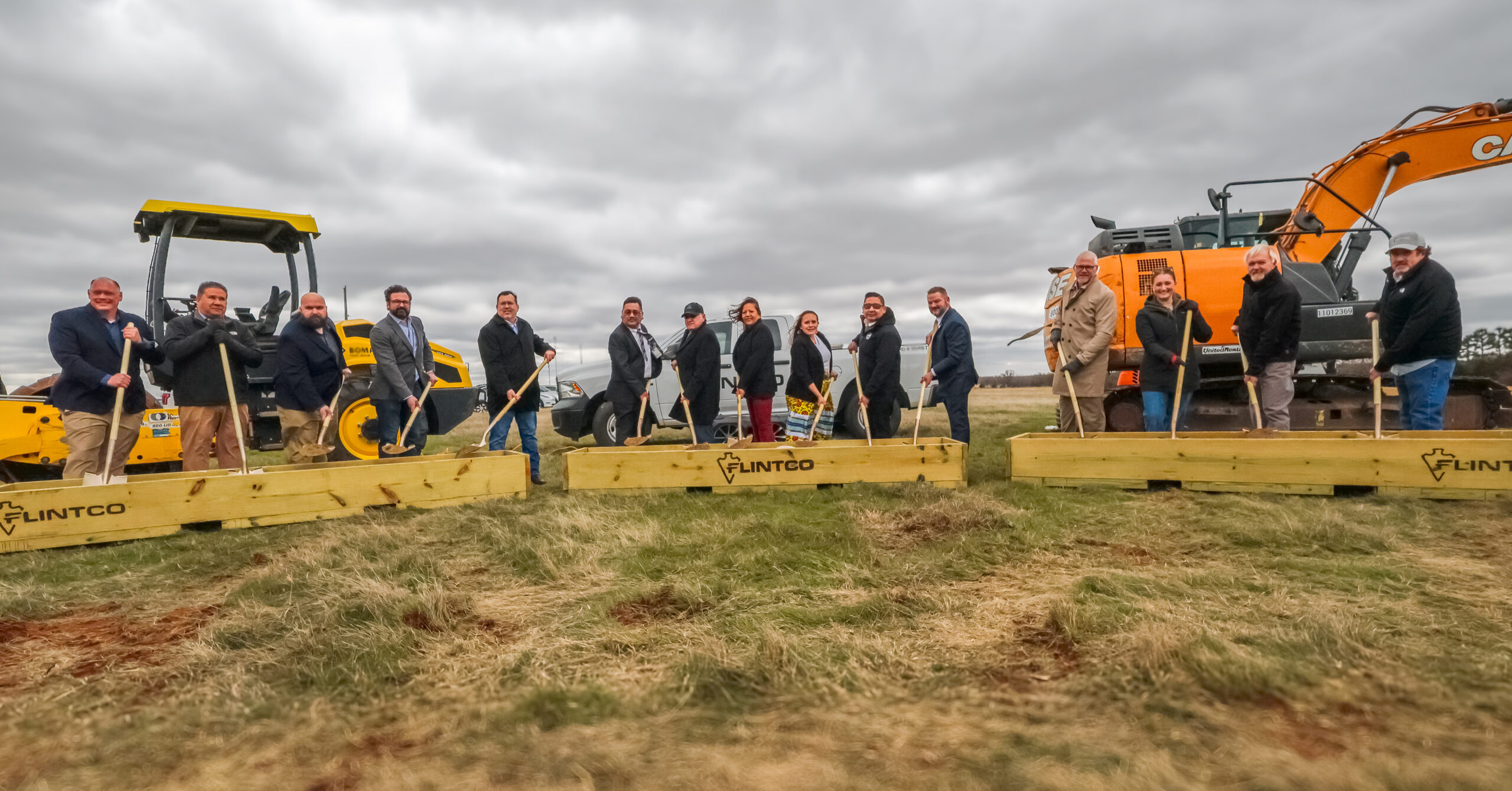
Shawnee, OK, March 20, 2025 – The Absentee Shawnee Tribal Health Authority (ASTHA), Connect Advisors, Childers Architects, and Flintco celebrated the groundbreaking of the new clinic, marking a significant expansion of healthcare services for tribal members and the broader community.
As a construction leader with a deep-rooted connection to Native American communities, Flintco brings unparalleled cultural understanding and a rich history to this transformative project, completing more than 100 tribal projects. Founded by a Cherokee family and operated under their ownership for more than 100 years, Flintco has established itself as a trusted partner in advancing healthcare services for tribal members nationwide.
“We are honored to partner with ASTHA on this transformative healthcare facility,” said Kirk Mammen, Flintco Vice President and Area Manager. “Our deep experience in healthcare construction and tribal projects uniquely positions us to deliver a facility that will serve the community’s healthcare needs while honoring its cultural heritage. This project represents everything Flintco stands for—excellence in construction that makes a meaningful difference in people’s lives.”
The new clinic will more than triple the space of ASTHA’s current facility, building upon its comprehensive service offerings, including diabetes and wellness care, family medicine, internal medicine, laboratory services, pharmacy, physical therapy, and radiology. The expanded facility will occupy a portion of a 69.5-acre site, providing ample room for future growth and development.
Throughout its engagements with diverse tribes, Flintco has consistently demonstrated a profound respect for Native American heritage and traditions. This reverence for cultural sensitivity is reflected in every aspect of the work, from early collaboration with tribal stakeholders to project execution. By leveraging extensive experience in tribal healthcare construction, Flintco ensures that the new facility will not only meet but also positively impact the lives of tribal members and strengthen the fabric of Native American healthcare infrastructure